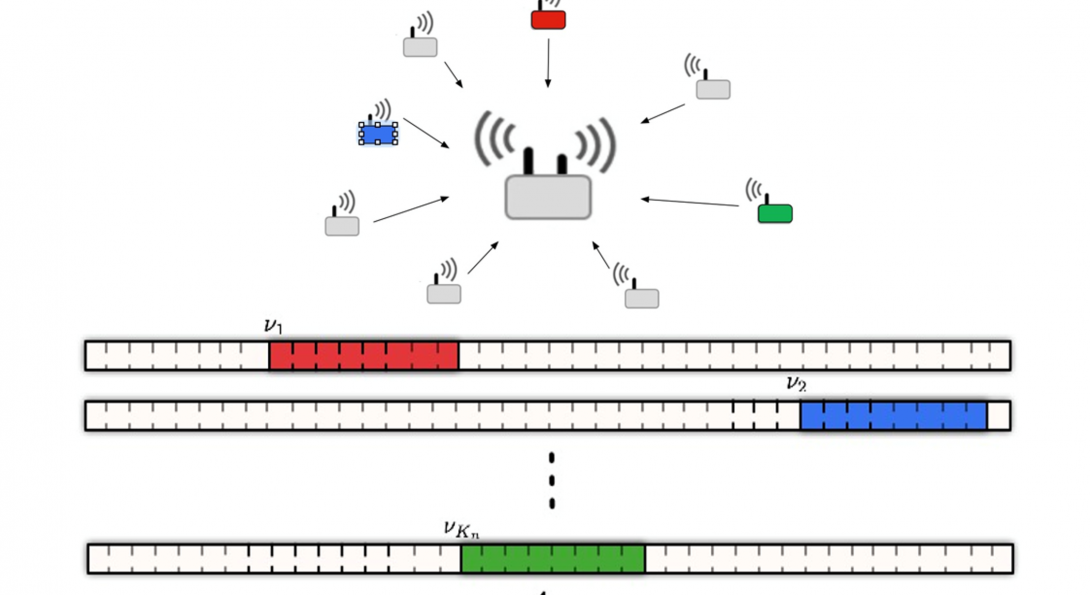On the Capacity of Strong Asynchronous Multiple Access Channels with a Large Number of Users

1
Sponsors:
Problem Statement and Motivation
- The classical information theoretic assumption that the transmitters and the receivers in a communication system are all synchronous, is not always realistic.
- Synchronization is usually achieved by transmitting a pilot signal before the data transmission; which is proved to be suboptimal in a strong asynchronous setting.
- Motivated by large decentralized networks, such as sensor networks and IoT, we investigate the strong asynchronous capacity of multiple access channels with large number of users.
- In this work the usage of pilot symbols for acquiring synchronization is not assumed, and the codebook may in theory serve the purpose of synchronization as well as of data transfer.
Technical Approach
- We take an information theoretic approach to find the capacity of a strong asynchronous multiple access channel with a large number of users under the assumption that:
- The length of transmission window is exponential in blocklength as e^(ηα).
- The number of users is also exponential in blocklength e^(ην).
- We find achievable rates for the case that the number of users scale exponentially less than the square root of the transmission window.

- We show that for the case that number of users grow exponentially larger than the transmission window, even synchronization is not possible.
Key Achievements and Future Goals
- S. Shahi, D. Tuninetti, N. Devroye, “On the Capacity of Strong Asynchronous Multiple Access Channels with a Large Number of Users ,’’ ISIT, 2016.
- Future goals:
- Tighten the gap between the achievability and converse bounds.
- Investigate the case where number of users scale larger than square root of the transmission window.


